![]()
![]()
![]()
Use LEFT and RIGHT arrow keys to navigate between flashcards;
Use UP and DOWN arrow keys to flip the card;
H to show hint;
A reads text to speech;
21 Cards in this Set
- Front
- Back
|
Q
air mass |
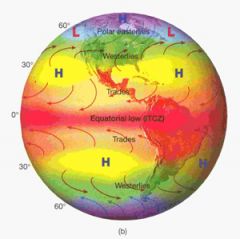
A
A huge body of air that has similar temperature, humidity, and air pressure throughout it. |
|
|
Q
Name the 4 major types of air masses that influence the weather in North America. |
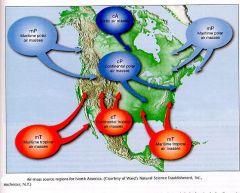
A
1. maritime tropical 2. continental tropical 3. maritime polar 4. continental polar |
|
|
Q
Describe a tropical air mass. |
A
A warm air mass that forms in the tropics and has low air pressure. |
|
|
Q
Describe a polar air mass. |

A
A cold air mass that forms north of 50˚N or south of 50˚S and has high air pressure. |
|
|
Q
Describe a maritime air mass. |
A
An air mass that forms over water and is moist. |
|
|
Q
State 3 characteristics of a maritime tropical air mass. |
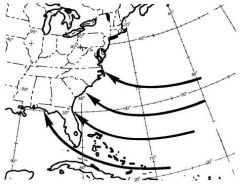
A
1. warm 2. humid 3. forms over oceans near the tropics |
|

Q
State 3 characteristics of a maritime polar air mass. |
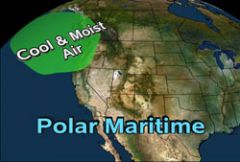
A
1. cool 2. humid 3. forms over the icy cold North Pacific and North Atlantic Oceans |
|
|
Q
cyclone |
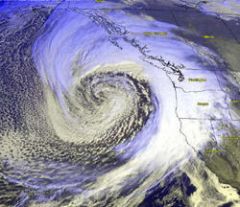
A
A swirling center of low pressure.Cool air spirals inward. |
|
|
Q
Anticyclone |
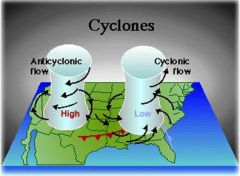
A
High pressure centers of dry air. The wind spirals out. |
|
|
Q
What direction does a cyclone turn in North America? |
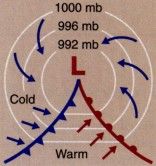
A
Winds of a cyclone (L) spin counterclockwise. |
|
|
Q
What direction does an anticyclone turn in North America? |
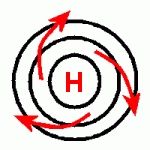
A
The winds of an anticyclone (H) spin clockwise. |
|
|
Q
State 3 characteristics of a continental tropical air mass. |
A
1. hot 2. dry 3. form over dry areas of the Southwest |
|
|
Q
State 3 characteristics of a continental polar air mass. |
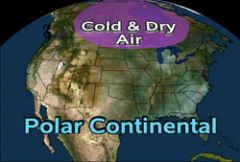
A
1. cool or cold 2. dry 3. forms over northern Canada or Alaska |
|
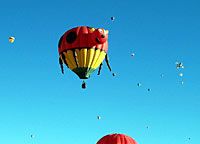
Q
When two air masses meet, why does the warm air mass rise? |

A
The warm air mass has a lower density than the cold air mass. |
|

Q
What is a front? |
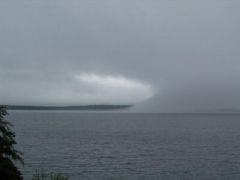
A
The area where two air masses meet but do NOT mix. |
|
|
Q
Name the four types of fronts. |
A
1. cold front 2. warm front 3. stationary front 4. occluded front |
|
|
Q
cold front |
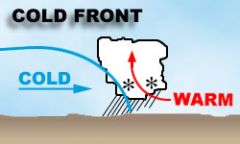
A
Moving cold air meets a warm air mass and puches the warm air up and over the cold air. |
|
|
Q
warm front |
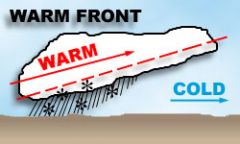
A
Moving warm air mass meets and moves over the cold air. |
|
|
Q
occluded front |
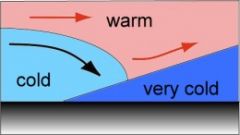
A
A warm air mass is cought above a cold air mass and a cool air mass that are close to the ground. |
|
|
Q
stationary front |

A
Cold and warm air masses meet and neither one has enough force to move. |
|
|
Q
What three things (characteristics) are similar in an air mass. |
A
1. similar temperature 2. similar air pressure 3. similar humidity |

